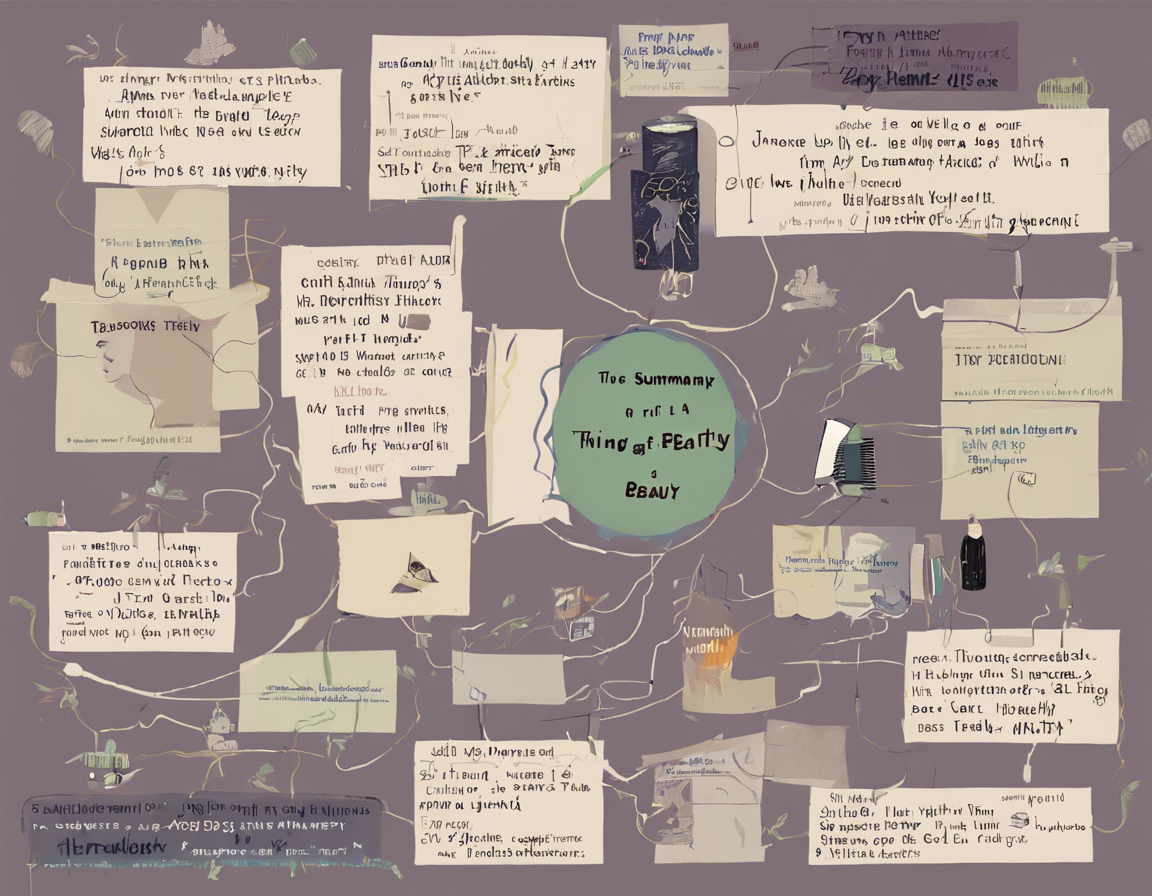In this blog post, we will delve into the mesmerizing world of John Keats’ poem “A Thing of Beauty.” This iconic Romantic poem encapsulates the essence of nature, beauty, and the human experience, making it a timeless piece of literature that continues to captivate readers around the world. We will provide you with a summary and analysis of this poem, dissecting its themes, literary devices, and deeper meanings to enhance your understanding and appreciation of Keats’ poetic masterpiece.
Summary of “A Thing of Beauty”:
“A Thing of Beauty” by John Keats begins with the assertion that beauty is everlasting and ubiquitous, existing in all aspects of the natural world. Keats emphasizes that beauty has the power to uplift the human spirit and instill a sense of joy and peace. The poem reflects on the transient nature of human existence but suggests that beauty serves as a constant source of solace and inspiration amidst life’s challenges.
Keats describes beauty as a “joy forever” that can soothe the soul and bring happiness even in the darkest of times. The poet compares beauty to a “lovely flower” that never fades, highlighting its enduring and timeless nature. Keats also emphasizes the importance of beauty in fostering love, compassion, and creativity in the human heart.
As the poem progresses, Keats explores the transformative power of beauty in shaping one’s perception of the world. He underscores the idea that immersing oneself in the beauty of nature can lead to a deeper appreciation of life and a sense of inner peace. Keats concludes by asserting that “A thing of beauty is a joy forever,” reinforcing the idea that beauty is a gift that continues to enrich the human experience.
Analysis of “A Thing of Beauty”:
-
Themes: The central theme of “A Thing of Beauty” revolves around the transcendental power of beauty to uplift the human spirit and bring solace in moments of despair. Keats explores the beauty of nature as a source of inspiration, emphasizing its ability to evoke profound emotions and shape our perception of the world.
-
Imagery: Keats employs vivid imagery throughout the poem to evoke a sense of beauty and wonder in the reader’s mind. The imagery of a “lovely flower” that never fades symbolizes the eternal nature of beauty and its capacity to bring joy and happiness.
-
Symbolism: The concept of beauty serves as a symbol of purity, harmony, and balance in a world fraught with chaos and uncertainty. Keats imbues beauty with a sense of divine presence, suggesting that it holds the key to unlocking the mysteries of life and existence.
-
Language and Structure: Keats’ use of poetic language and structure enhances the lyrical quality of the poem, creating a melodic rhythm that resonates with the reader. The beauty of Keats’ language mirrors the theme of the poem, underscoring the intrinsic connection between art and beauty.
-
Mood and Tone: The mood of “A Thing of Beauty” is contemplative and introspective, inviting readers to reflect on the profound significance of beauty in their lives. Keats’ tone is reverential and awe-inspiring, conveying a deep sense of admiration for the splendor of the natural world.
Frequently Asked Questions (FAQs):
- What is the central message of “A Thing of Beauty” by John Keats?
-
The central message of the poem is the enduring power of beauty to bring joy, solace, and inspiration in the midst of life’s challenges.
-
How does Keats use imagery to convey the theme of beauty in the poem?
-
Keats employs vivid imagery such as the “lovely flower” to symbolize the eternal nature of beauty and its ability to uplift the human spirit.
-
What role does beauty play in shaping one’s perception of the world in the poem?
-
Beauty is portrayed as a transformative force that enhances one’s appreciation of life and fosters a sense of inner peace and harmony.
-
How does Keats connect beauty to the concept of eternity in the poem?
-
Keats suggests that beauty is everlasting and timeless, serving as a “joy forever” that transcends the transient nature of human existence.
-
Why is “A Thing of Beauty” considered a Romantic poem?
- The poem embodies key themes of Romanticism, such as the celebration of beauty, nature, and the emotional depth of human experience, making it a quintessential work of the Romantic era.
In conclusion, “A Thing of Beauty” by John Keats stands as a poignant ode to the transformative power of beauty in enriching our lives and connecting us to the sublime wonders of the natural world. Through its lyrical language, evocative imagery, and profound philosophical insights, this poem continues to inspire readers to seek beauty in all its forms and cherish it as a timeless source of joy and solace.
